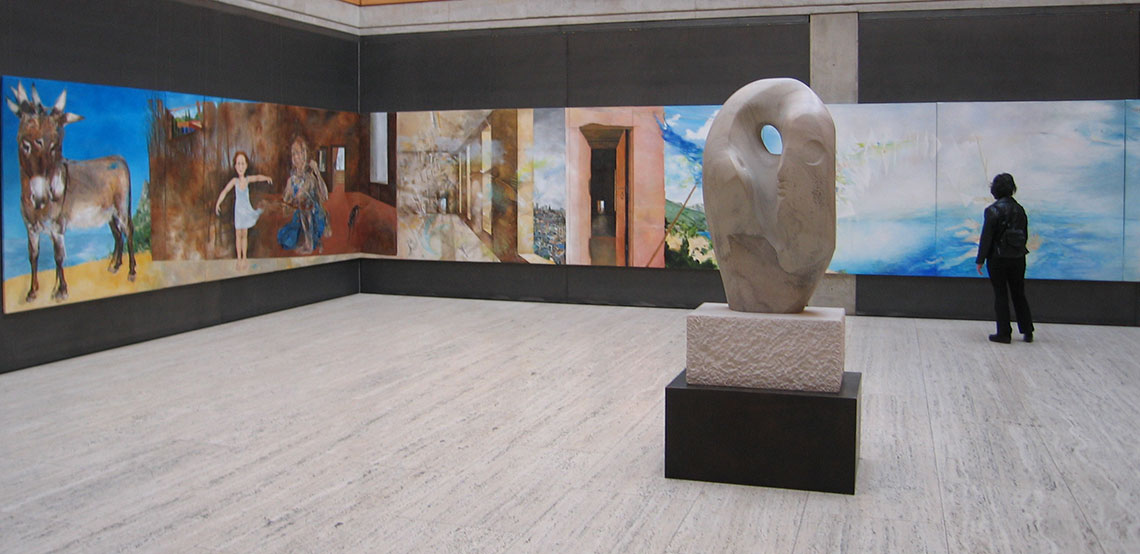The Inhabited Space
A 360° panorama in 11 sections
2006
Click image to view
Oil on eleven stretched canvases
6 feet x 53 feet overall
(1.85 x 16.3 metres)
This cycle of paintings (worked on over nearly ten years) was finally completed during an intensive period of work whilst a resident artist at the Albers Foundation in Bethany, Connecticut.
Although the panorama started as a meditation on Velázquez’s Las Meninas – my initial impulse being to try and make a painting about the very act of painting and about the spaces (physical and metaphysical) a painter (or any other type of creative individual) inhabits – it grew larger and larger as I imagined what might lie beyond the emptied room of the Velázquez painting. It was only some time after the work was completed that I realised it had become a painted autobiography.
It seems to me that all of us put together inside our heads a mélange of the disparate physical, emotional and imaginative spaces occupied in our lives, hence the physical fusion of, in my case, the view from my studio in London, the Connecticut woods and Mallorcan landscapes. The ‘sea paintings’ within the work explore the more metaphysical space of memory; sensuality; the fractured space of sleep/death and the donkey as an embodiment of spirit. The other canvases relate to the Las Meninas interior and to the (turned around) canvas Velázquez has placed inside it, so that in this transcription it becomes, in places, a painting as many as four or five times removed. In these sections particularly, the overriding preoccupation is with the act of painting although contained in almost every constituent canvas are references to books.
Painting has always seemed to me a form of drama where, just as Chekhov understood that the shooting in The Seagull must happen off stage and out of sight, so the painter negotiates what happens beyond the painting’s edge. By allowing my meditation to grow from Velázquez’s emptied room (his studio) into a 360º panorama, the viewer becomes placed inside the image and, I suppose, effectively inside a female painter’s autobiography.
HKW
2015
